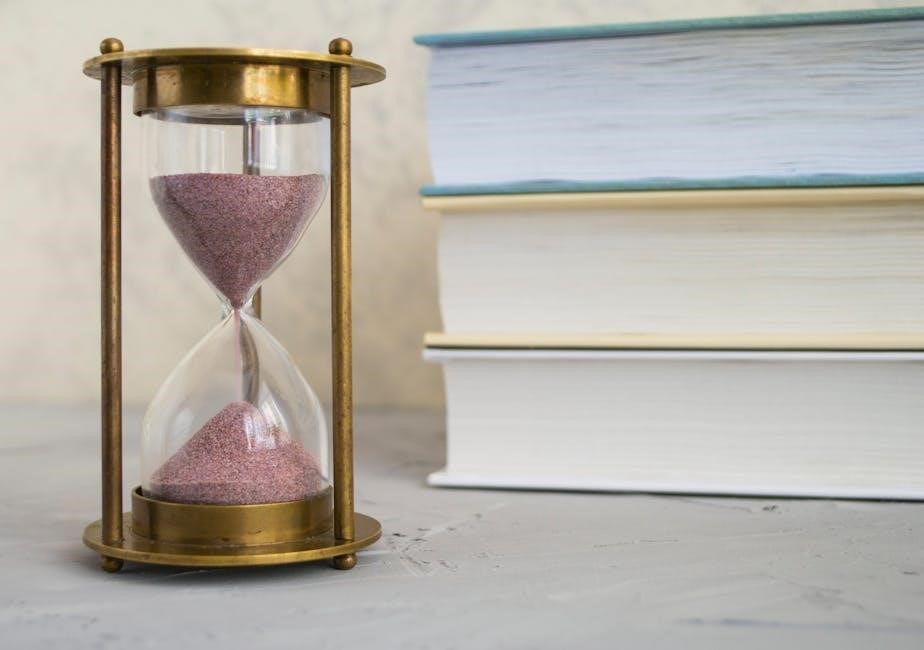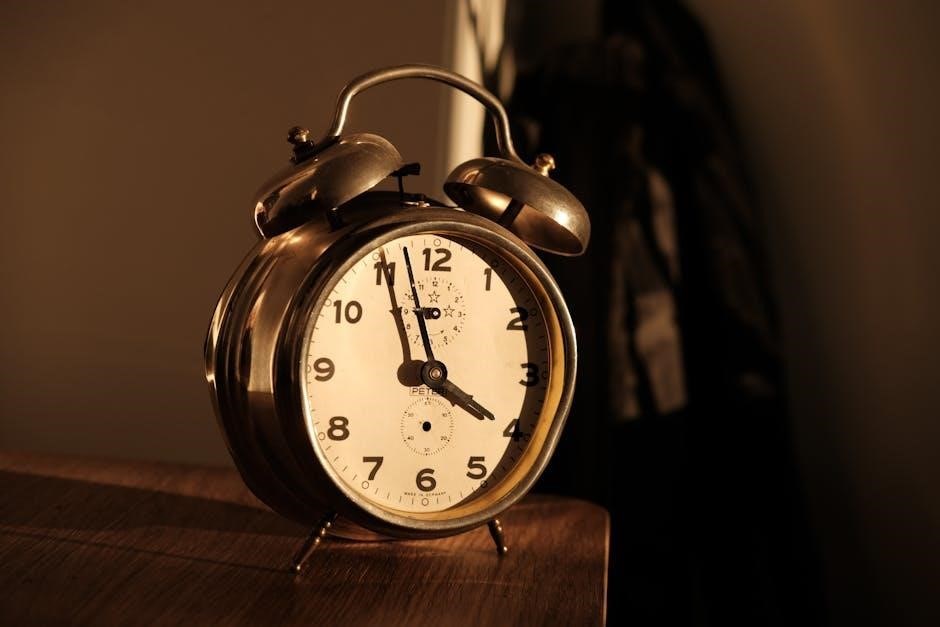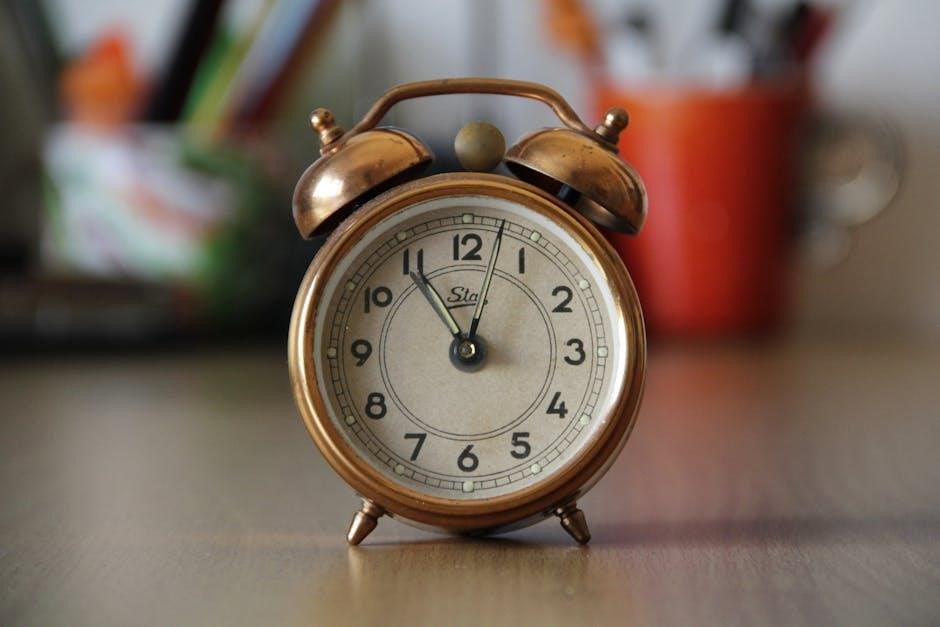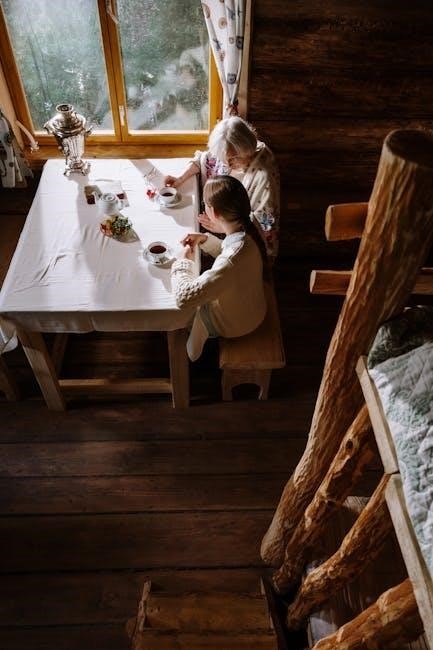Overview of the 10-Minute Table Runner Project
The 10-minute table runner project is a quick and easy sewing endeavor perfect for beginners or anyone needing a fast decor update․ It utilizes minimal fabric‚ often remnants‚ and involves just a few simple seams‚ making it a satisfyingly swift creation․

What is a 10-Minute Table Runner?
A 10-minute table runner is a simplified sewing project designed for rapid completion‚ typically achievable within a short timeframe․ Its essence lies in its efficiency and beginner-friendliness‚ utilizing minimal fabric – often less than a yard of two coordinating prints – and a straightforward construction process․
The core concept involves layering two pieces of fabric‚ sewing along the long edges‚ turning the resulting tube right-side out‚ pressing it flat‚ and optionally trimming the ends․ Some variations might include adding interfacing or batting for extra stability or thickness‚ but the fundamental principle remains the same: speed and simplicity․
This type of table runner is ideal for those seeking instant gratification‚ needing a last-minute gift‚ or wishing to utilize fabric scraps creatively․ Its adaptability allows for customization in terms of length‚ width‚ and fabric choices‚ making it suitable for various table sizes and occasions․ Whether it’s a festive holiday accent or a subtle everyday embellishment‚ the 10-minute table runner offers a quick and versatile solution for enhancing table decor with minimal effort and readily available materials․
It is a perfect introductory project to sewing‚ providing a sense of accomplishment without overwhelming complexity․
Materials Needed for a Quick Table Runner
To create a 10-minute table runner‚ gather two coordinating fabrics‚ a sewing machine‚ thread‚ scissors or a rotary cutter‚ a ruler‚ and an iron for pressing․ Optional materials include batting or interfacing․
Fabric Requirements
For the 10-minute table runner‚ fabric selection is key to its visual appeal and functionality․ Typically‚ you’ll need two coordinating fabrics: one for the center focus and another for the bordering sides․ A theme print is an excellent choice for the center‚ allowing you to showcase a particular pattern or color scheme․ Consider seasonal prints for holidays or floral designs for everyday use․
The amount of fabric required depends on the desired length and width of your table runner․ A common size is approximately 14 inches wide and 40 inches long when finished․ For the center focus fabric‚ about 1/3 yard is usually sufficient․ The background fabric‚ which will frame the center‚ typically requires around 1/2 yard․
When choosing fabrics‚ quilting cottons are a popular option due to their ease of use and wide variety of designs․ However‚ you can also experiment with other lightweight woven fabrics‚ such as linen or even repurposed materials like orphan blocks․ Ensure the fabrics coordinate well in terms of color‚ pattern‚ and texture to create a cohesive and visually appealing table runner․
Consider pre-washing your fabrics to prevent shrinkage after the table runner is completed․ This is especially important if you plan to wash the table runner frequently․ With the right fabric choices‚ your 10-minute table runner will add a touch of charm to any table setting․

Step-by-Step Instructions for Sewing a 10-Minute Table Runner
Creating a 10-minute table runner involves simple steps: cutting fabric‚ sewing long edges together‚ pressing seams‚ and turning it right side out․ This quick project adds a personal touch to your table decor in minutes․
Cutting the Fabric
To begin your 10-minute table runner‚ precise fabric cutting is crucial for a neat‚ professional finish․ Start by selecting two coordinating fabrics․ A theme print and a complementary background fabric work well․ Typically‚ you’ll need about 1/3 yard for the center focus fabric and 1/2 yard for the background fabric․
Determine the desired length and width of your finished table runner․ A common size is around 14 inches by 40 inches‚ but you can adjust this to fit your table․ Cut the center focus fabric to the desired width‚ plus seam allowance (usually 1/2 inch on each side); For example‚ if you want a 10-inch wide center‚ cut it to 11 inches․
Next‚ cut the background fabric into two strips․ The width of these strips will determine the overall width of your table runner․ Ensure they are long enough to match the length of your center fabric piece․ Accuracy in cutting ensures that the final product is symmetrical and visually appealing‚ contributing to the project’s success․
Sewing the Seams
With your fabric pieces precisely cut‚ the next step is sewing the seams․ This is where the table runner begins to take shape․ Place the center focus fabric right side up on your work surface․ Then‚ position one background fabric strip along each long edge of the center fabric‚ right sides together․ Pin these edges to secure them for sewing․
Using a sewing machine‚ stitch along the pinned edges with a consistent seam allowance‚ typically 1/2 inch․ Ensure your stitches are straight and even for a professional look․ Repeat this process for both sides of the center fabric‚ attaching the background strips to create a long tube of fabric․
Once both seams are sewn‚ remove the pins and carefully press the seams open with an iron․ This will reduce bulk and create a flatter‚ more polished finish․ Accurate sewing and pressing are vital for achieving a well-defined and attractive table runner‚ enhancing its overall appeal․
Turning and Pressing the Table Runner
After sewing the seams‚ the next crucial step is turning the table runner right side out․ Carefully reach inside the fabric tube and gently pull one end through the opening until the right sides of the fabric are facing outwards․ Take your time to avoid stressing the seams․
Once turned‚ use a point turner or a dull pencil to gently push out the corners‚ ensuring they are crisp and well-defined․ Avoid using sharp objects that could damage the fabric or poke through the seams․ With the table runner fully turned‚ lay it flat on an ironing board․
Press the entire table runner thoroughly‚ paying close attention to the seams․ Pressing the seams flat will give your table runner a professional appearance․ This step is essential for a polished and finished look‚ enhancing the overall appeal of your handmade creation․
Variations and Customization Options
The beauty of the 10-minute table runner lies in its adaptability․ While the basic construction is simple‚ there are numerous ways to customize it to match your personal style and décor․ One popular variation is to use different fabric combinations․ Experiment with contrasting colors‚ patterns‚ or textures to create a unique look․ Consider using themed fabrics for holidays or special occasions․
Adding embellishments is another way to personalize your table runner․ Buttons‚ ribbons‚ or lace can be sewn along the edges or across the center to add visual interest․ You could also try adding decorative stitching using different thread colors or embroidery designs․
Another customization is to adjust the length and width of the table runner to fit your table perfectly․ A narrower runner can be used as an accent piece‚ while a longer runner can span the entire length of the table․ Feel free to play around with different dimensions to achieve the desired effect․
Where to Find Free 10-Minute Table Runner PDF Patterns
Finding free PDF patterns for 10-minute table runners is easier than you might think! Many generous designers and crafting websites offer these patterns as a way to share their love of sewing and inspire others to create․ A great starting point is to search online using keywords like “free 10-minute table runner pattern PDF” or “easy table runner sewing pattern free download․”
Crafting blogs and websites are excellent resources for free patterns․ Many sewing bloggers share their own designs or link to other free patterns they’ve discovered․ Be sure to check out popular sewing websites and online crafting communities․
Another option is to look for patterns on social media platforms like Pinterest and Facebook․ Many sewing groups and pages share free patterns and tutorials․ You can also find video tutorials on YouTube that often include links to free downloadable patterns․
Remember to always check the terms of use for any pattern you download․ While most free patterns are intended for personal use‚ some may have restrictions on commercial use or distribution․ Happy sewing!

Tips for Achieving a Successful 10-Minute Table Runner
While the name suggests a super-quick project‚ a few tips can ensure your 10-minute table runner turns out beautifully․ Accurate cutting is crucial․ Even slight inaccuracies can lead to uneven edges or a skewed finished product․ Take your time when measuring and cutting your fabric pieces‚ using a rotary cutter and a cutting mat for the best results․
Pressing is another key step․ Pressing seams open or to one side after sewing helps create a crisp‚ professional finish․ It also makes the table runner lay flatter․ Don’t skip this step!
Consider your fabric choices․ While quilting cottons are a popular option‚ other fabrics like linen‚ denim‚ or even home decor fabrics can work well․ Choose fabrics that complement your home décor or the occasion for which you’re making the table runner․ Pre-washing your fabric is always recommended to prevent shrinkage after the table runner is sewn․
Finally‚ don’t be afraid to experiment with variations․ Add decorative stitching‚ embellishments‚ or even fringe to personalize your table runner and make it your own․ With a little care and attention to detail‚ you can create a stunning table runner in no time!

Uses for 10-Minute Table Runners
The versatility of a 10-minute table runner extends far beyond just dressing up a dining table․ Their quick creation time and customizable nature make them ideal for a multitude of purposes․ Of course‚ they are perfect for adding a touch of color and style to your dining table‚ whether it’s for everyday use or a special occasion․ Change them out seasonally or to match your dinnerware․
But don’t limit yourself to the dining room! Use them to brighten up coffee tables‚ sideboards‚ or even dressers․ A pop of fabric can add visual interest to any surface․ They also make fantastic gifts․ A handmade table runner is a thoughtful present for housewarmings‚ holidays‚ or birthdays‚ especially when customized to the recipient’s taste․
Consider using them for themed parties or events․ Create table runners in festive fabrics for holidays like Christmas‚ Halloween‚ or Easter․ They can instantly transform your space and add to the celebratory atmosphere․
Finally‚ don’t forget their practical uses․ Protect your furniture from scratches and spills with a stylish table runner․ They are easy to clean or replace‚ making them a great way to keep your surfaces looking their best․ With a little imagination‚ the possibilities are endless!
